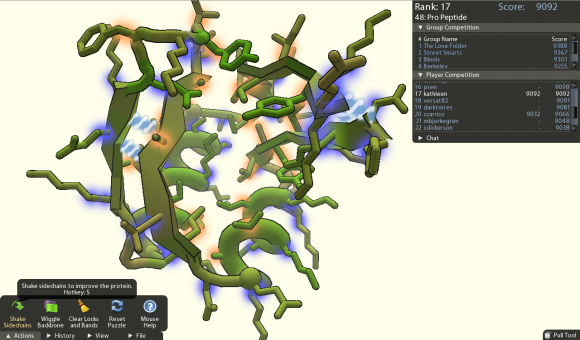

M-PMV (Mason Pfizer Monkey virus) is an important model for studying human disease, as it can be used to locate potential inhibitors of HIV. Because of its complex structure, scientists had struggled to decipher the virus. In an unlikely turn, gamers playing the spatial game Foldit, solved what leading scientists could not – in 10 days!
After laboring for years, University of Washington biologists sent the virtual 3D model of the M-PMV to Foldit, where its legions of users could interact with the virus. 

Foldit allows users to manipulate proteins through folding, one of biology’s biggest issues. The problem facing the scientists was that M-PMV has millions of possible folding combinations, making it extremely difficult for even their high-end computers to find the optimum structure.
The game only requires spatial reasoning skills, so you don’t have to be a Ph.D. candidate to play with the software. And that’s precisely why gamers were able to solve what super-computers could not; computers cannot yet mimic the spacial reasoning and logic of a human being.
Seth Cooper, the lead designer and developer of Foldit, sees crowdsourcing as a future asset to the scientific community.
The critical role of Foldit players in the solution of the M-PMV [retroviral protease] structure shows the power of online games to channel human intuition and three-dimensional pattern-matching skills to solve challenging scientific problems. Although much attention has recently been given to the potential of crowdsourcing and game playing, this is the first instance that we are aware of in which online gamers solved a longstanding scientific problem.
Next time your parents tell you video games are a waste of time, tell them this story.
Source: ZMEScience
Play games, take surveys and take advantage of special offers to help support mxdwn.
Every dollar helps keep the content you love coming every single day.
